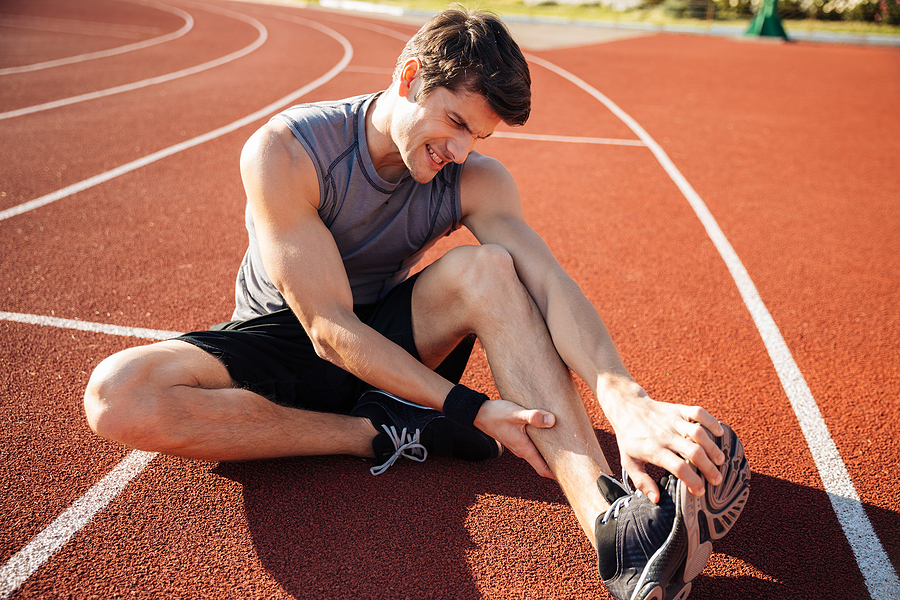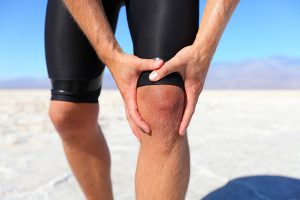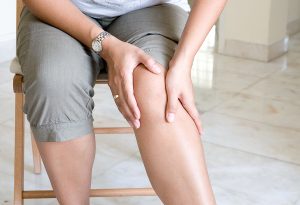While track and field injuries aren’t as great as in other sports, they still happen. One study found that about 4 out of 1,000 were injured over a span of five seasons. Injuries were more likely to occur during a competition than during practice. Of those, hips and thighs are the most common injuries.
Track and field athletes in Fresno work hard, but there are still risks, as is true with any sport. Learning strategies to prevent track and field injuries is important, but it’s also vital to understand what can go wrong and how to treat it if it does.
What Are the Most Common Track and Field Injuries? And What Treatments Are Likely?
Your body goes through a lot during a track and field meet. The impact of your heels hitting the ground can cause stress fractures. If you land a jump wrong, you can strain ligaments and tendons. In Fresno’s heat, there’s the chance of overheating during a practice or competition.
Heat-related illnesses like heat exhaustion, heat stroke, and dehydration are possible. Make sure you stay hydrated during a practice or track meet. In addition to water, you want to make sure you’re replenishing electrolytes. That helps prevent dehydration. That’s just the heat-related issues. There are also common bone, ligament, muscle, tendon, and joint injuries like the following.
Achilles Tendinitis
The Achilles tendon connects the back of the heel to the calf muscles. Overuse of these tendons leads to pain above the heel. Insertional Achilles tendinitis occurs in the lower portion of the tendon where it meets the heel bone.
Noninsertional Achilles tendinitis occurs in the middle. With this type, the fibers of the Achilles tendon break down and develop small tears. That injury causes swelling and the tendon gets thicker.
In mild cases, rest and ice for the pain and inflammation are common treatments. Physical therapy can help ease stress on the Achilles tendon. If it’s torn, surgery may be required.
ACL Strain or Tears
The anterior cruciate ligament runs down the leg from the thigh bone to the shinbone and stabilizes your knee. It can become strained or torn with motions like pivoting, landing wrong, sudden stops, or changes of direction. Strength training helps prevent ACL strain and tears. If there is an injury, rest is important.
Bursitis
Bursae are fluid sacs that cushion the joints. When they become inflamed, it’s incredibly painful and swelling occurs. Bursitis is most likely to happen in the elbow, hip, and shoulder. It’s often treated with self-care, but it can take a few weeks of rest.
Hamstring Injuries
Three hamstring muscles run down the back of the thigh. They can become strained in motions like sprinting where you suddenly start and stop. If a hamstring is injured, you might feel a pop. Swelling and pain are common, but there can be bruising, too. Rest and ice help in most cases, but if it’s hard to put weight on the leg, a trip to the doctor is important.
Patellofemoral Syndrome
Also known as runner’s knee, this is pain that happens in the front of the knee around the kneecap. It’s an injury that often occurs with overuse of the cartilage below the kneecap. Self-care is usually the preferred treatment. Rest the leg, use ice to control swelling, and take NSAIDs like ibuprofen to ease pain. A knee brace can help support the knee while walking.
Plantar Fasciitis
The plantar fascia is a ligament within the bottom of the foot. Something as simple as unsupportive shoes can cause this injury where heel pain is a prevalent symptom. If you’re suffering from plantar fasciitis, it’s important to rest the foot and keep weight off it as much as possible.
Shin Splints
Medial tibial stress syndrome is a condition where inflammation of the tissue surrounding the shin bone leads to pain and inflammation. This type of injury is usually caused by excessive stress on the lower leg while training or running. Healing from shin splints typically involves self-care and a few weeks of reduced activity.
Shoulder Injuries
The most common shoulder injury is rotator cuff strain that’s caused by repetitive use of the shoulder, especially with over-the-head motions like throwing a javelin or shot put. You want to rest and avoid having it tear. If it tears, surgery is required.
Sprains and Muscle Strain
Common sprains and muscle strain are also possible. With both, you can cause these injuries by not warming up properly, landing wrong, or twisting an ankle. There are three grades of sprains. If it’s a severe strain, see a doctor. You’ll tell if it’s severe by the bruising, swelling, and amount of pain.
Stress Fractures
Stress fractures occur from excessive pressure on bones over time. They’re common in the ankles. Most are minor and never need a splint or cast, but more severe fractures might need medical attention or a walking cast to stabilize the ankle from any movement.
What Can Fresno Athletes Do to Prevent Injuries?
What does an orthopedic specialist recommend for preventing these common injuries? Start with a healthy diet. Fuel your body with the nutrients it needs to heal the tissue that’s damaged with use. Protein is important as your muscle cells need protein for growth and repair. The antioxidants in fruits and vegetables are equally important.
If you’re not sure how to eat in a way that benefits your joints, muscles, and the rest of your body, work with a doctor who specializes in medically supervised fitness programs as diet is part of it. Also, make sure you stay hydrated. People don’t always drink enough water. The exact amount is debated, but a good rule of thumb is two liters for women and three liters for men, more if you are sweating a lot.
That’s diet and hydration covered. The rest focuses on the joints, muscles, tendons, and ligaments specifically.
Don’t start a race or practice without first warming up. Start slow, stretch your muscles to warm them up, and then get started with your race or practice. After a race ends, cool down. Imagine what would happen to a car if you’re driving at 100 mph and suddenly turn the engine off. When you’re just done a race, dropping everything isn’t great for your body. It needs to cool down first.
When Fresno’s warm weather arrives, you can’t just rush outside and run a marathon. You need to acclimate to the temperatures. Slowly work your way up from say a 30-minute run to an hour. Then, work your way to 90 minutes and two hours. Don’t try to do it all at once.
As you start working out and warming up, make sure you’re incorporating strength training into the mix. Track and field events do require a lot of leg strength, but events like javelin throws and shot put require upper body strength that benefits from a strength training routine.
Running and jumping puts a lot of strain on the joints and muscles. Remember that there is a wrong and right way to run. It starts with shoes that help absorb the shock. You also need to know how to land right. Landing on your toes first can strain them. Heel first can slow your momentum, which could knock you off balance. Work with a physical therapist who helps you learn how to land correctly after each stride.
Premium Sports & Orthopedics offers a range of treatment options to help you heal from a track and field injury. Our orthopedic specialists also offer physical therapy services that help you strengthen joints and muscles to prevent re-injury. Schedule an appointment online or give us a call to set a time to come to our North Milburn Avenue office.







